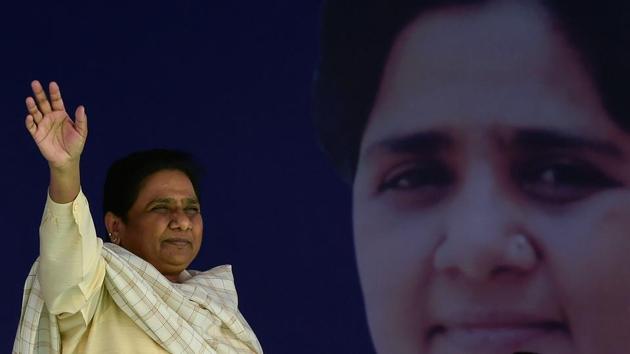Opinion | Mayawati’s life is a compelling story
BSP chief Mayawati’s life offers a compelling narrative of a battle against caste, gender and income discrimination to conquer India’s most populous and complex state.
“One day, she will fulfil Babasaheb Ambedkar’s dream!” claimed Bahujan Samaj Party (BSP) founder Kanshi Ram, pointing to the woman who had just served us tea. We were at his official residence in Delhi on a lazy winter afternoon in the early 1990s. I almost did a double take before faintly nodding at the salwar kameez-clad lady who had stayed mostly silent during our animated conversation on caste and politics. Mayawati still hadn’t quite burst on to the national stage and it was only a few years later that she became Uttar Pradesh chief minister and transformed herself into a politician not to be trifled with.

I was reminded of that early encounter with Behenji when I watched Samajwadi Party leader, Akhilesh Yadav, last week express the hope that the next prime minister would be from UP and then gently turn in Mayawati’s direction at a joint press conference. Is Behenji really a serious candidate to be India’s first Dalit prime minister? At one level, that question must seem rather absurdly fanciful given the decline in BSP fortunes in recent elections. Moreover, Mayawati and her family remain mired in multiple charges of corruption. She has also acquired the damning reputation of being an erratic, transactional politician, someone who will make or break alliances based on short-term conveniences.
And yet, at another level, Mayawati is still held up as a powerful symbolic figure of social mobility, her father once a humble postal employee in a dusty western UP town. For the country’s upper class, upper caste metropolitan elite, Mayawati’s failings represent the darker side of Indian politics but for the Dalit-Bahujan multitudes, she is an inspirational figure. An elitist disdain is visible in some of the criticism of her flaunting of wealth: how many Brahmin-Bania politicians are lampooned for being weighed in gold and silver at election time? And what of the cutout culture and endless self-promotion by other contemporary netas or, indeed, the serious corruption charges that swirl around so many of them?
The caricaturing of Mayawati as a venal autocrat does not fairly or fully represent the complex persona of a politician who, after all, has completed a remarkable journey from the margins of society to the heart of Indian politics. As a four-time chief minister of UP, she is seen as a tough, no-nonsense administrator, especially strong on law and order. And while the corruption charges are grave, there is another reality of a relatively successful doer chief minister cutting through red tape to fast-track major infrastructure projects like the Yamuna Expressway between Noida and Agra.
Which is why Mayawati being projected as a potential non-Congress, non-BJP leadership alternative is a distinctly strategic option for those, especially in the crucial battleground of the Hindi heartland, who would like to see anyone but Narendra Modi become prime minister again. One of Prime Minister Modi’s more successful calling cards during the 2014 wave election was his image as the chaiwallah from the nondescript town of Vadnagar who was making the great leap to 7 Lok Kalyan Marg. As the meritocratic kaamdar who has battled his way against the dynastical naam-dars , it gives the prime minister a distinct edge in perception as the non-privileged neta taking on the Rahul Gandhis of the political universe.
By contrast, a Mayawati’s life offers an even more compelling narrative of a battle against caste, gender and income discrimination to conquer India’s most populous and complex state. The gareeb Dalit ki beti (daughter of a poor Dalit) is a storyline that is difficult to combat even for a master political communicator like Mr Modi, who has consistently played up his modest origins. In a fractured polity in which caste identities still shape voter choices, “Behenji for PM” is the kind of sloganeering that can unite Dalits and create the basis for a broader coalition of those social groups who are fearful of the rising tide of political Hindutva, especially in Uttar Pradesh.
Which might explain why an Akhilesh Yadav has chosen to bury 25 years of Yadav-Dalit animosity and thrown up an early trial balloon to test the political winds. Other opposition leaders with an eye on the top job may not bite the bait just yet, but in a national election, in which localised alliances could play a key role, don’t be surprised if the haathi (elephant) of the BSP looks to ride on the Samajwadi Party cycle to reshape political equations in Delhi via Lucknow. The demure, short-haired lady I first met all those years ago has evolved into a feisty political warrior who maybe ready for a serious tilt at the big prize her mentor had once prophesied for her.
Post-script: Mayawati, much like Modi, is an imperious political figure who doesn’t like being questioned. So on the one rare occasion when I was able to interview her, I remember her angrily responding to a question on corruption. “You mediapersons are all upper caste Manuwaadis!” she retorted. She isn’t entirely wrong: most newsrooms, like the rest of society, have negligible space for Dalits in positions of power and influence.
Rajdeep Sardesai is senior journalist and author
The views expressed are personal






